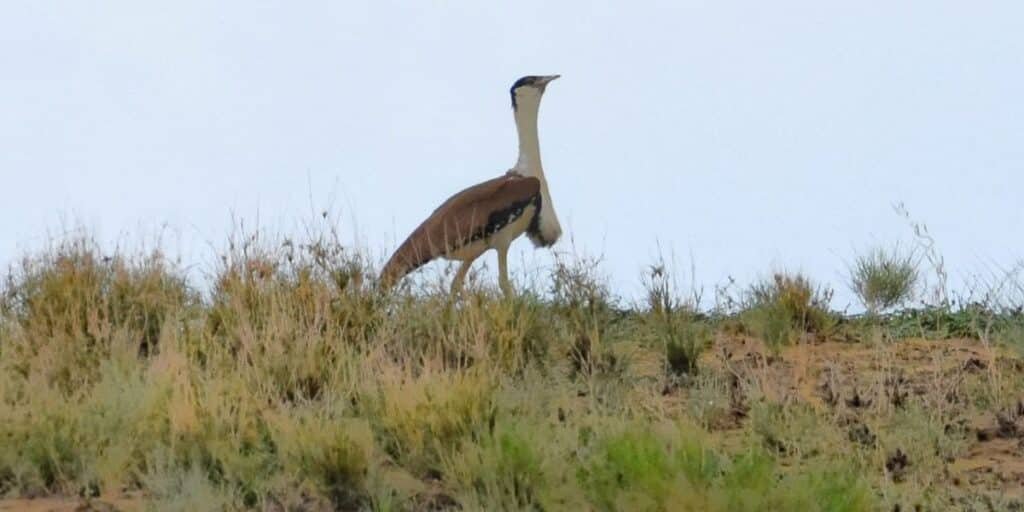Webdesk: Video and picture evidences showing six Great Indian Bustards in Pakistan’s Cholistan Desert was recently shared by Pakistani wildlife expert and photographer Syed Rizwan Mehboob on social media.
Posting on X, Mehboob described the sighting as a “new record” for rare wildlife appearances in the country. “I clicked six critically endangered Great Indian Bustards (GIB) in the Cholistan desert today.”
Rare video from Cholistan desert showing mating foreplay among critically endangered Great Indian Bustards – also rare sound male GIB makes before mating (5 & 24 second)
— Syed Rizwan Mehboob (@syedrizwanmehb1) July 21, 2025
Dance, calls,unison & parting of lovers❤️
(Apologies for my shaking hands,as I was hid in a thorny bush🙏) pic.twitter.com/33wm2b5d62
“Amazing conservation effort by Punjab Wildlife population today,” he wrote, highlighting what he described as a promising moment for Pakistan’s wildlife.
A new record in rare wildlife sightings from Pakistan
— Syed Rizwan Mehboob (@syedrizwanmehb1) July 20, 2025
I clicked 6 critically endangered Great Indian Bustards(GIB) in the Cholistan desert today ❤️
Amazing conservation effort by Punjab Wildlife Dept – I am in tears 🙏 having seen 10% of global GIB population today @WWFPak pic.twitter.com/GfxAZSAx4z
Last year, five GIBs, along with a chick, were seen in the same region. This new sighting of six birds suggests that a small group of the species has managed to establish itself in Cholistan.
Commenting on the development, Dr Sumit Dookia, a senior Indian wildlife expert, said that spotting six GIBs in one day was extremely rare. He added that the critically endangered birds rely heavily on wide, open grasslands that are free from human interference.
Conservationists and wildlife experts have warned that a lethal combination of shrinking habitats, poaching, and natural prey has all but driven the Great Indian bustard to the edge of extinction.
Great Indian Bustard is the long-legged, tall bird that was one of the heaviest birds that fly, and its number is now estimated to be around 200 or 250 birds worldwide. The International Union for Conservation of Nature (IUCN) has listed it under the critically endangered category due to the rapidly decreasing population.
Things are even worse in Pakistan. According to the World Wide Fund for Nature-Pakistan (WWF-Pakistan), there are currently only approximately 25 to 35 of these birds remaining in the country. The species is native to the Indian subcontinent but is now scarcely observed.
The bird is predominant in the Western Indian states of Rajasthan and Gujarat and is called gurano locally. In Pakistan, it is only seen in the isolated reaches of the Cholistan desert, and rarely in the open grasslands of the Thar desert.
These threats have continued to make the survival of this unique species incredibly difficult, and as such, conservationists have been strongly pleading with authorities to prompt action in an effort to save what remains of the population.
The recent sighting of six Great Indian Bustards in Cholistan stands as a remarkable achievement for the Punjab Wildlife Department, reflecting their dedicated conservation efforts to protect one of the world’s rarest bird species.
Read more: BJP’s unwarranted interference in Indian institutions sparks concern over religious autonomy





